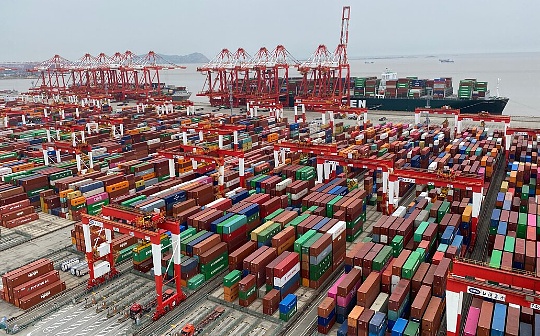The future business of Stripe bets: AI and stablecoins jointly drive, launching "stablecoin financial accounts" and crypto payment cards

Reprinted from panewslab
05/09/2025·14D Stripe Co-founder and President John Collison at Stripe Sessions
Stripe Co-founder and President John Collison at Stripe Sessions
Author: Weilin, PANews
After acquiring Bridge, payment company Stripe has finally launched a massive stablecoin service.
From May 6 to 8, Stripe's CEO Patrick Collison and President John Collison were both present at the Stripe Sessions 2025 conference held in San Francisco. At the event, Stripe announced that it plans to launch "stablecoin financial accounts" in more than 100 countries around the world, allowing merchants and enterprises to hold and pay international suppliers. The account will use USDC issued by Circle and USDB stablecoins issued by Stripe's recently acquired Bridge subsidiary.
In his opening keynote speech, John also emphasized how transformational technologies such as artificial intelligence (AI) and stablecoins can reshape the economy and business. They believe these innovations bring unprecedented growth opportunities and require new financial infrastructure, and Stripe is focusing on providing support to help businesses adapt and thrive.
Launching "Stablecoin Financial Account", Stripe bets on cross-border
payments for stablecoins
In February this year, Stripe acquired stablecoin infrastructure company Bridge for $1.1 billion, its largest acquisition to date, and also set the largest acquisition in the crypto space at that time. It broke the record three months later by Coinbase for $2.9 billion.
Stripe was founded in 2009 by Irish brothers Patrick Collison and John Collison. Back in 2014, Stripe became one of the first payment companies to accept Bitcoin payments, but its cryptocurrency plan failed in 2018. The reason given is that "Bitcoin has evolved into an asset, not a means of exchange. This has made Bitcoin less useful in payments." Until March 2022, Stripe announced its return to the crypto space. PayPal can be regarded as a significant competitor to Stripe in the payment market.
Now, by launching a stablecoin financial account, merchants and businesses will be able to hold stablecoins, receive funds on crypto and fiat channels such as ACH and SEPA, and send stablecoins to almost anywhere in the world. These accounts will allow entrepreneurs in currency-abiding countries to hedge inflation and access the global economy more easily. Stripe will first support two USD-denominated stablecoins - USDC and Bridge's USDB, and plans to gradually add more stablecoins in the future.
William Gaybrick, president of Stripe Products and Business, told the Stripe Sessions conference: “Many regions in the world face unstable currencies and unreliable infrastructure, which limit the Internet’s GDP…and now users from Argentina, Vietnam and other places can hold stablecoins and send and receive funds through both crypto and fiat currencies.”
Stablecoin financial accounts also support holdings of pounds, euros and US dollars. The expansion also means double the company's global business landscape - previously, Stripe account was only available in 50 countries.
“We should be very upset with the current situation of financial services today,” John Collison, Stripe co-founder and president, told the outside world. “In the financial services sector, invoice fraud is a big problem facing businesses, and there are phishing attacks and so on. While this is a new product, it provides us with an opportunity to bring a higher level of security in the long run.”
 Stripe ' s headquarters in South San Francisco
Stripe ' s headquarters in South San Francisco
Bridge and Visa cooperate to launch crypto payment cards
On April 30, Bridge and Visa launched the world's first payment card product to make stablecoin balances as easy to consume as fiat currency. Fintech companies like Ramp, Squads, and Airtm will be able to issue Visa cards tied to stablecoin wallets in dozens of countries. When a cardholder makes a purchase, Bridge deducts funds from its stablecoin balance and converts it into fiat currency, allowing merchants to collect payments in local currency just like other transactions. These stablecoin cards can be used in 150 million merchants that accept Visa worldwide.
The integration enables the simultaneous issuance of new cards in multiple countries, starting with Argentina, Colombia, Ecuador, Mexico, Peru and Chile. Focus on Latin America aims to meet the growing demands of consumers and businesses for the use of stablecoins to store value and pay for daily expenses. Payment cards will be expanded to countries in Europe, Africa and Asia in the coming months.
"The reason why stablecoins have not been adopted on a large scale is because users face high complexity in their participation," Subham Agarwal, Ramp's product director and head of product marketing, told the outside world recently. “And Ramp now removes this complexity, we tell users that they can trade in any way and we will automatically direct transactions to cheaper, faster, and more stable channels.”
Visa CEO Ryan McInerney also said that as consumers begin to rely on artificial intelligence agents to browse goods and complete shopping, the advertising and payment industries will undergo profound changes.
Optimistic about "intelligent business", AI and stablecoins will become
driver engines
In addition to the stablecoin financial account, Stripe has launched a tool in AI that allows developers to easily integrate AI agents that can complete purchases on behalf of users into their products. For example, an efficiency app can enable "one-click purchase" for tasks on to-do lists, said William Gaybrick, president of Stripe's products and business.
“This is a double revolution between intelligence and currency,” Gaybrick said. “Artificial intelligence is clearly changing the way we work and live, and stablecoins are the first truly global, practical, fully programmable currency we have ever seen.”
The conference also revealed the rapid expansion trend of the Stripe platform. Business growth on the Stripe platform is significantly faster than traditional markets (Stripe platform's S&P 500 enterprises grow seven times faster), and handled $1.4 trillion in transactions in 2024. Stripe CEO Patrick Collison highlights Stripe's commitment to becoming a fast-refined and highly reliable platform, supporting evidence of software updates over 1,000 times a day. In addition, Bridge's initial payment volume grew faster than early Stripe.
The guests present also pointed out that despite the uncertainty of the global economy, technological advances, especially AI and stablecoins, are still powerful driving forces. AI enables enterprises to scale significantly and accelerate unprecedented growth. Stablecoins have significantly reduced friction in global financial transactions, paving the way for "borderless financial services" and are a prominent case of global adoption.
Stripe President John Collison proposed a key new concept, namely "Agentic Commerce", in which AI tools create new sales channels and purchasing experiences by facilitating the purchase and interaction of AI models in commercial transactions. This involves buying and integrating other tools directly into the AI interface, revolutionizing the way in which AI models sell. John Collison demonstrated the use of Cursor (AI programming tool) to build applications and use AI to purchase services directly on Vercel, demonstrating the practical applications of intelligent body-shaped business.
Dwarakesh Patel, author of The Scaling Era, further discusses the development trajectory of AI. He pointed out that current AI limitations (e.g., long-term memory, ability to perform expanded autonomous tasks) still need improvement, but he stressed that its rapid development shows that AI will significantly increase productivity in the future, possibly far exceeding the economic impact of previous technologies such as the Internet, and becoming an efficient and scalable "digital worker."
At the conference, John Collison said, "The real achievement of stablecoins is that it is achieving borderless financial services." Obviously, Stripe has shown great ambitions in this area with its strategic layout.



 jinse
jinse